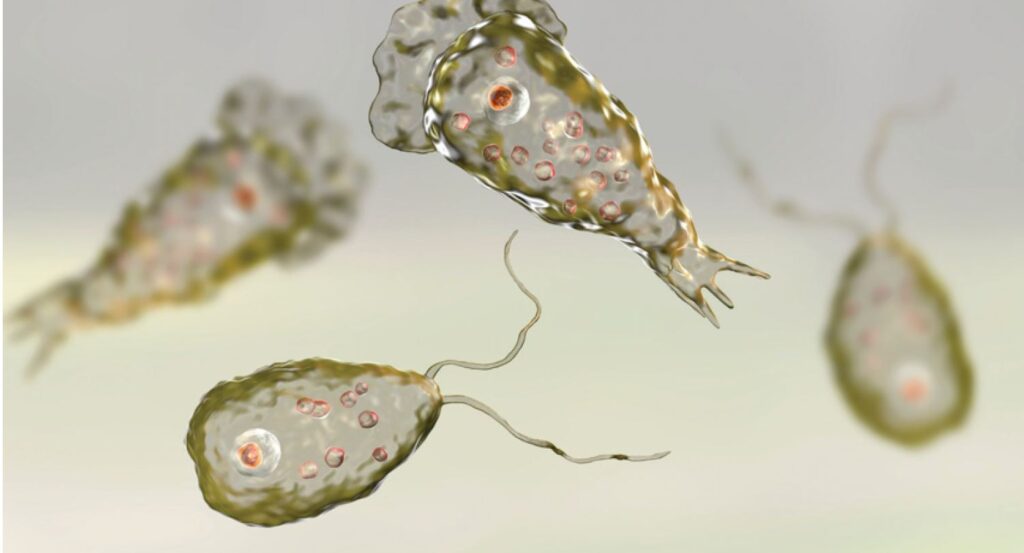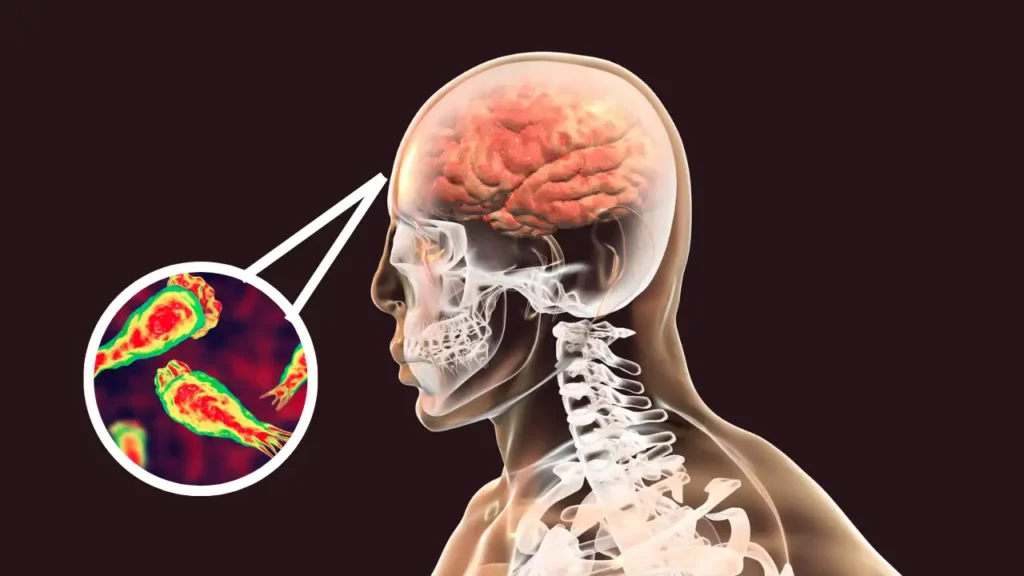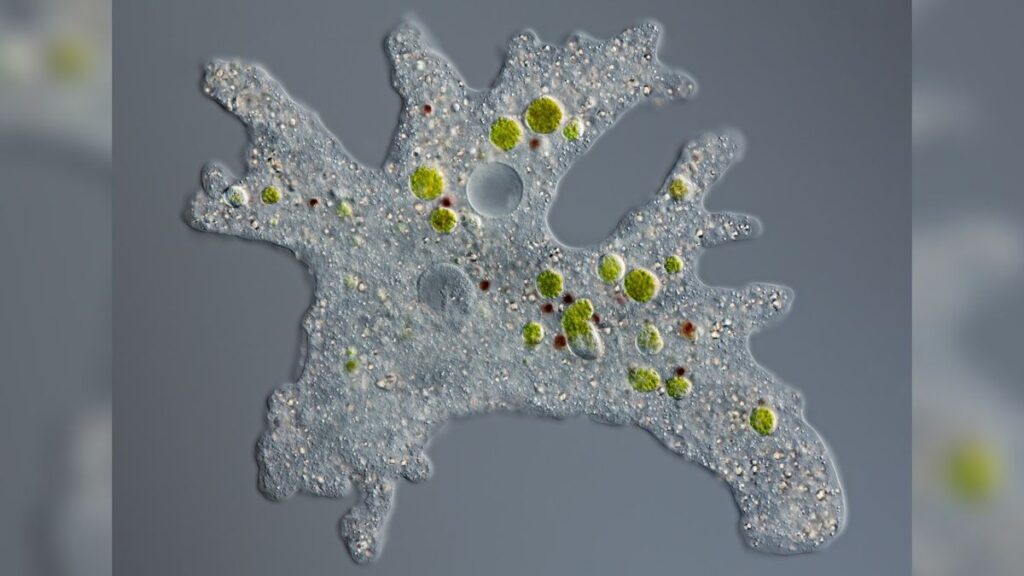Discover the early and advanced brain-eating amoeba symptoms, how they affect the body, and practical prevention steps. Learn what to look out for, when to seek medical help, and how to stay safe while swimming in lakes, rivers, or pools. Brain-Eating Amoeba Symptoms: How to Recognize and Protect Yourself.
When I first read about the brain-eating amoeba, I was shocked at how dangerous it can be if not recognized early. This microscopic organism, known scientifically as Naegleria fowleri, is rare but deadly. It usually infects people who swim in warm freshwater, where the amoeba can enter through the nose. Knowing the symptoms of brain-eating amoeba infection is the first step in protecting yourself and your loved ones.
What is the brain-eating amoeba?
The brain-eating amoeba, or Naegleria fowleri, is a tiny single-celled organism found in warm freshwater environments like lakes, rivers, and hot springs. It thrives in temperatures above 30°C and becomes more active in the summer months. The infection it causes is called primary amebic meningoencephalitis (PAM), a rare but often fatal brain infection. Understanding how it spreads and its effects on the body can help reduce fear and encourage awareness.

How Does the Infection Happen?
I was surprised to learn that the amoeba does not spread through drinking contaminated water. Instead, infection occurs when water containing the amoeba enters the nose. From there, it travels up the nasal passages to the brain, where it begins to destroy brain tissue. This is why activities like diving, water sports, or swimming in untreated freshwater pose the highest risk. Wearing nose clips or avoiding risky waters is a key prevention method.
Early Symptoms of Brain-Eating Amoeba
At first, the symptoms of brain-eating amoeba may feel like a regular sinus infection or flu. This makes it tricky to identify in the beginning.
Early warning signs include:
- Headache
- Fever
- Nausea
- Vomiting
- Stuffy or runny nose
These usually appear within 1 to 9 days after exposure. Because they resemble common illnesses, many people don’t realize something more serious is happening until the infection spreads further.

Advanced Symptoms to Watch For
As the infection worsens, the brain-eating amoeba symptoms become severe and life-threatening. I found it alarming how quickly the disease progresses.
Advanced symptoms include:
- Stiff neck
- Confusion or hallucinations
- Loss of balance
- Seizures
- Sensitivity to light
- Comma
At this stage, medical treatment is critical. Most cases progress rapidly, and without early detection, survival rates are extremely low.
Timeline of Symptoms
| Stage | Timeframe After Exposure | Symptoms |
|---|---|---|
| Early | 1–3 days | Headache, fever, nausea, vomiting |
| Middle | 4–5 days | Stiff neck, confusion, loss of balance |
| Severe | 6–9 days | Seizures, hallucinations, coma |
This table helped me clearly understand how fast the infection escalates. Recognizing the symptoms early can make all the difference in seeking medical attention quickly.
Why It’s Hard to Diagnose
Doctors face a real challenge diagnosing brain-eating amoeba infections because the symptoms look so much like meningitis or the flu. Unless there’s a known history of swimming in warm freshwater, the condition can go unnoticed until it’s too late. That’s why spreading awareness is so important. If someone shows flu-like symptoms after recent freshwater exposure, it’s essential to mention it to a doctor.

When to Seek Medical Help
I learned that time is the most important factor in surviving Naegleria fowleri infection. If you or someone you know develops a sudden fever, headaches, or confusion after swimming in lakes or rivers, seek emergency care immediately. Mentioning possible exposure to the amoeba can help doctors take faster action, which may include specialized treatments like antifungal medications and supportive care. Acting quickly gives the best chance of recovery.
Prevention Tips That Work
The good news is that preventing brain-eating amoeba infection is possible with simple steps. I personally make it a point to be cautious when swimming outdoors, especially in warm, untreated waters.
Prevention methods include:
- Avoid swimming in warm freshwater during summer.
- Use nose clips to block water entry.
- Refrain from stirring up sediment in shallow areas.
- Only swim in properly chlorinated pools.
- Avoid diving or dunking your head in untreated lakes.
Taking these precautions reduces risk significantly.
Myths and Misconceptions
When I started researching brain-eating amoeba symptoms, I found many myths online that cause unnecessary fear. One big misconception is that you can get infected from drinking tap water—this is not true. The amoeba only infects through the nose. Another myth is that it’s common, but in reality, cases are very rare. Staying informed helps us stay calm while also being careful in high-risk situations.

Key Takeaways
- The brain-eating amoeba (Naegleria fowleri) infects people through the nose, not by drinking water.
- Early symptoms look like the flu: fever, headache, nausea, and vomiting.
- Advanced symptoms include confusion, seizures, and coma, which develop quickly.
- Infections progress rapidly, often within a week of exposure.
- Mentioning freshwater swimming history to doctors can help early diagnosis.
- Prevention includes using nose clips, avoiding warm lakes, and swimming in chlorinated pools.
Conclusion
Brain-Eating Amoeba Symptoms: How to Recognize and Protect Yourself
Writing about the brain-eating amoeba symptoms reminded me how vital awareness is for health and safety. While the infection is extremely rare, knowing the warning signs and prevention strategies can save lives. By recognizing symptoms early, seeking immediate medical care, and taking simple precautions, we can enjoy swimming safely without unnecessary fear. I now feel more confident sharing this knowledge so others can stay informed and protected.
